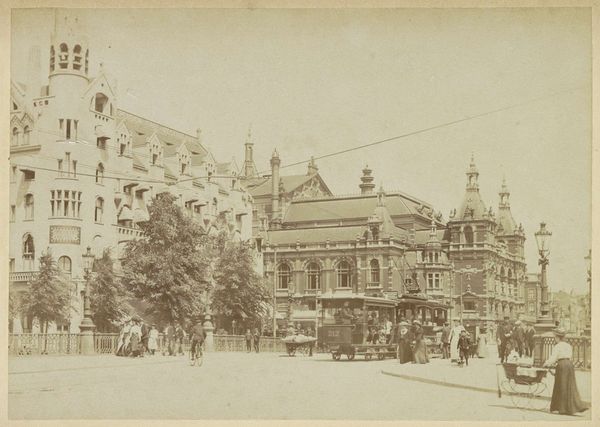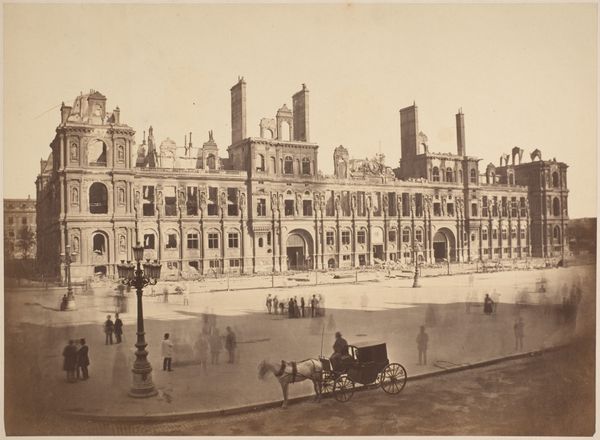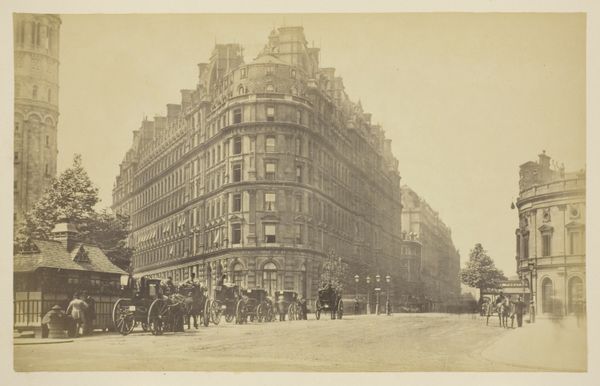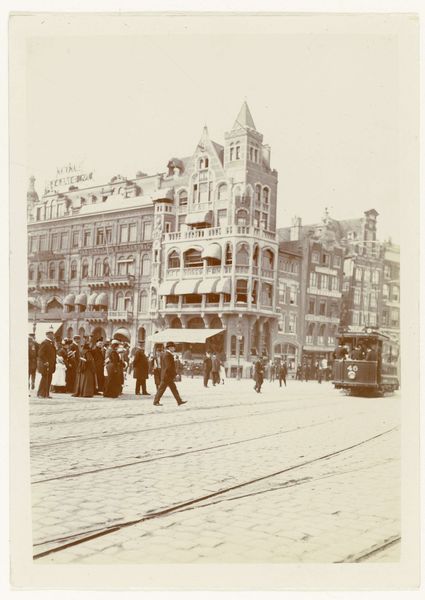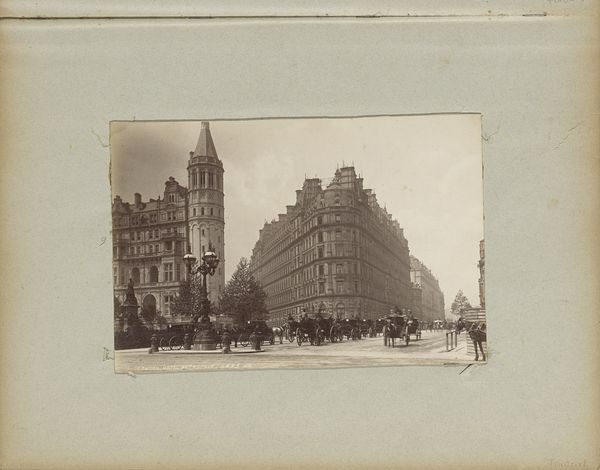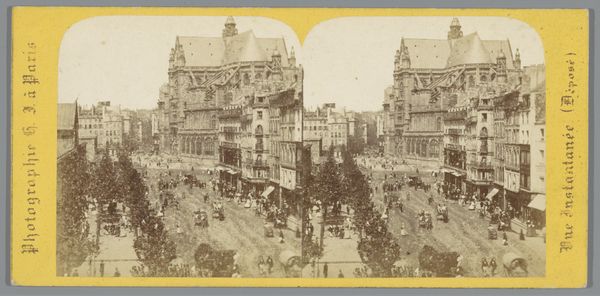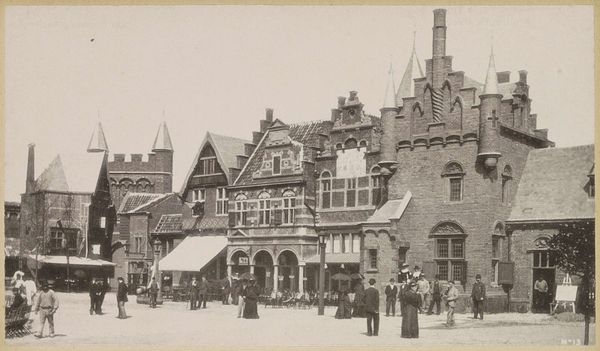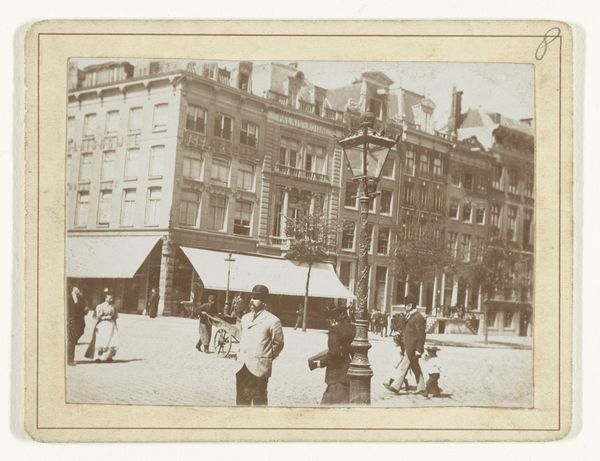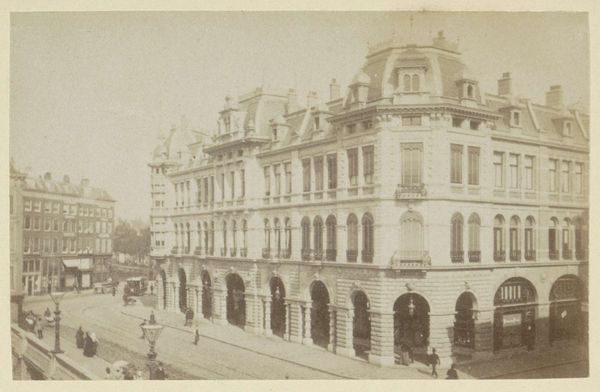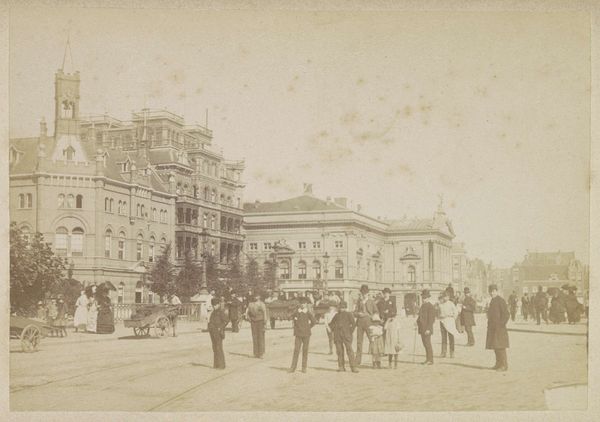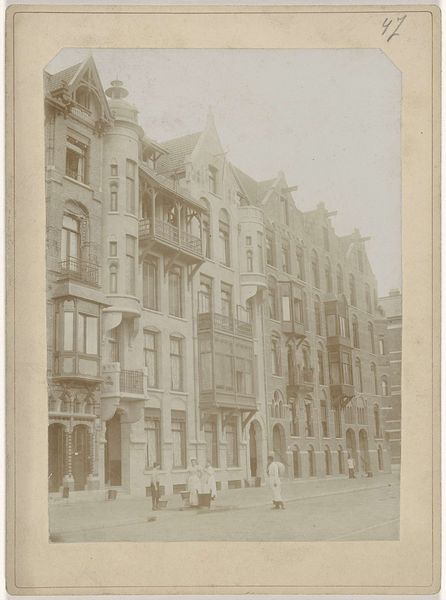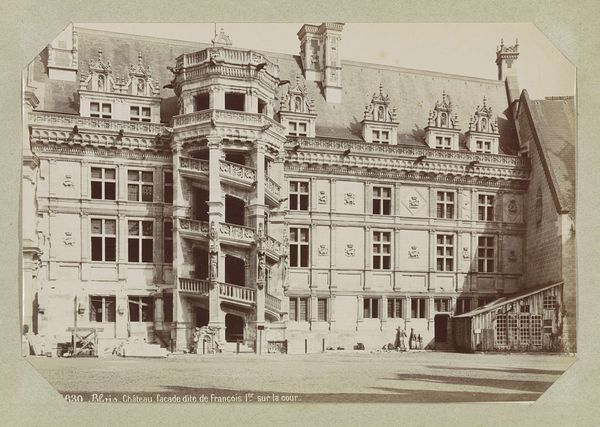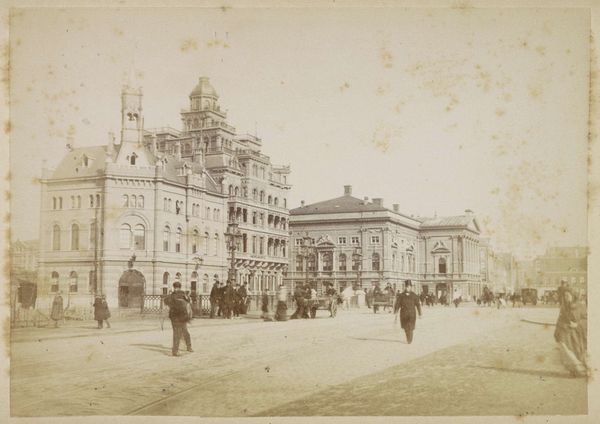
print, photography, albumen-print, architecture
#
16_19th-century
# print
#
archive photography
#
street-photography
#
photography
#
historical photography
#
cityscape
#
history-painting
#
albumen-print
#
architecture
Dimensions: height 214 mm, width 272 mm, height 304 mm, width 410 mm
Copyright: Rijks Museum: Open Domain
Curator: This is an albumen print capturing the exterior of the Saint-Eustache church in Paris, attributed to Louis Antoine Pamard, dating from somewhere between 1870 and 1900. Editor: It feels like stepping back in time. The muted tones give it such a melancholic and quiet presence, despite all those figures populating the space. Curator: Right, the albumen process lends that characteristic sepia tone. We're looking at a very specific convergence here: advances in photographic techniques intertwining with urbanization. Notice the sheer volume of people bustling about their daily lives juxtaposed with the static monumentality of the church. Editor: Absolutely! And you know, seeing the people milling about in their finery against this massive church makes me think about how places of worship function as centers of social life. This print really illustrates how the church served not only as a religious hub, but as a physical and spiritual cornerstone for community, don't you think? Curator: Indeed, we see here how photographic documentation served to legitimize and chronicle the transformation of Paris under the Second Empire. The albumen print, as a medium, became intrinsically linked with disseminating idealized urban imagery but the exposure here almost equalizes social hierarchy to the flat tone range of the process itself. The choice of focusing on the architecture is fascinating. It invites considerations of labor and the economics tied to image making and selling within cityscapes undergoing modernization. Editor: True, I can see that. It makes me think too about what the artist wanted to immortalize; capturing fleeting moments in history. The artist is present but in an understated way and the scale gives the space the feeling of intimacy with such grand themes. I like it very much. Curator: So, in considering the photograph of Saint-Eustache, we gain insights into not only a church's design and place within the urban environment, but the mechanics of the period. Editor: A frozen moment offering a window into so much—the intersection of belief, labor, history, even dreams and photographic technologies all held still on paper. I love it.
Comments
No comments
Be the first to comment and join the conversation on the ultimate creative platform.
